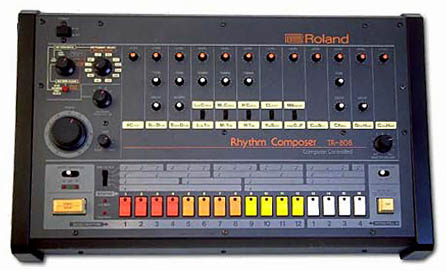|
Post-disco
Post-disco (also called boogie, synth-funk, or electro-funk) is a term to describe an aftermath in popular music history circa 1979–1985, imprecisely beginning with an unprecedented backlash against disco music in the United States, leading to civil unrest and a riot in Chicago known as the Disco Demolition Night on July 12, 1979, and indistinctly ending with the mainstream appearance of new wave in 1980. Reynolds, Simon (2009) Grunge's Long Shadow' - In praise of "in-between" periods in pop history (Slate, MUSIC BOX). Retrieved on 2-2-2009" During its dying stage, disco displayed an increasingly electronic character that soon served as a stepping stone to new wave, old-school hip hop, euro disco, and was succeeded by an underground club music called hi-NRG, which was its direct continuation. An underground movement of disco music, which was simultaneously "stripped-down" and featured "radically different sounds," took place on the East Coast that "was neither disco and neither ... [...More Info...] [...Related Items...] OR: [Wikipedia] [Google] [Baidu] |
Boogie (genre)
Boogie (sometimes called post-disco and electro-funk) is a rhythm and blues genre of electronic dance music with close ties to the post-disco style, that first emerged in the United States during the late 1970s to mid-1980s. The sound of boogie is defined by bridging acoustic and electronic musical instruments with emphasis on vocals and miscellaneous effects. It later evolved into electro and house music.Serwer, Jesse (2009XLR8R Jesse Serwer in an interview with Dam-Funk. Retrieved on 2-2-2010. Characteristics Boogie, following the example of post-disco, generally lacks the four-on-the-floor beat, the "traditional" rhythm of disco music; instead has a strong accent on the second and fourth beats, and tempo generally in the 110 to 116 beats-per-minute range. Aside from applying certain technological and promotional aspects of new wave music and having been fairly exposed to its subgenre synthpop, boogie is, however, R&B-rooted and predominantly draws from funk music. Other infl ... [...More Info...] [...Related Items...] OR: [Wikipedia] [Google] [Baidu] |
Dance-rock
Dance-rock is a dance-infused genre of rock music. It is a post-disco genre connected with pop rock and post-punk with fewer rhythm and blues influences. It originated in the early 1980s, following the decline in popularity of both punk and disco. Examples of early dance-rock include Gina X's "No G.D.M.", Russ Ballard's "On the Rebound", artists such as Dinosaur L, Liquid Liquid and Polyrock, and the compilation album '' Disco Not Disco''. Definitions Michael Campbell, in his book ''Popular Music in America'', defines the genre as "post-punk/post-disco fusion". Campbell also cited Robert Christgau, who described dance-oriented rock (or DOR) as an umbrella term used by various DJs in the 1980s. However, AllMusic defines "dance-rock" as 1980s and 1990s music practiced by rock musicians, influenced by Philly soul, disco and funk, fusing those styles with rock and dance. Artists like the Rolling Stones, David Bowie, Duran Duran, Simple Minds, INXS, Eurythmics, Depeche Mode, the C ... [...More Info...] [...Related Items...] OR: [Wikipedia] [Google] [Baidu] |
Dance-pop
Dance-pop is a popular music subgenre that originated in the late 1970s to early 1980s. It is generally uptempo music intended for nightclubs with the intention of being danceable but also suitable for contemporary hit radio. Developing from a combination of dance and pop with influences of disco, post-discoSmay, David & Cooper, Kim (2001). ''Bubblegum Music Is the Naked Truth: The Dark History of Prepubescent Pop, from the Banana Splits to Britney Spears'': "... think about Stock-Aitken-Waterman and Kylie Minogue. Dance pop, that's what they call it now — Post-Disco, post-new wave and incorporating elements of both." Feral House: Publisher, p. 327. . and synth-pop, it is generally characterised by strong beats with easy, uncomplicated song structures which are generally more similar to pop music than the more free-form dance genre, with an emphasis on melody as well as catchy tunes. The genre, on the whole, tends to be producer-driven, despite some notable exceptions. Da ... [...More Info...] [...Related Items...] OR: [Wikipedia] [Google] [Baidu] |
Disco Music
Disco is a genre of dance music and a subculture that emerged in the 1970s from the United States' urban nightlife scene. Its sound is typified by four-on-the-floor beats, syncopated basslines, string sections, brass and horns, electric piano, synthesizers, and electric rhythm guitars. Disco started as a mixture of music from venues popular with Italian Americans, Hispanic and Latino Americans and Black Americans "'Broadly speaking, the typical New York discothèque DJ is young (between 18 and 30) and Italian,' journalist Vince Lettie declared in 1975. ..Remarkably, almost all of the important early DJs were of Italian extraction .. Italian Americans have played a significant role in America's dance music culture .. While Italian Americans mostly from Brooklyn largely created disco from scratch .." in Philadelphia and New York City during the late 1960s and early 1970s. Disco can be seen as a reaction by the 1960s counterculture to both the dominance of rock music and the ... [...More Info...] [...Related Items...] OR: [Wikipedia] [Google] [Baidu] |


